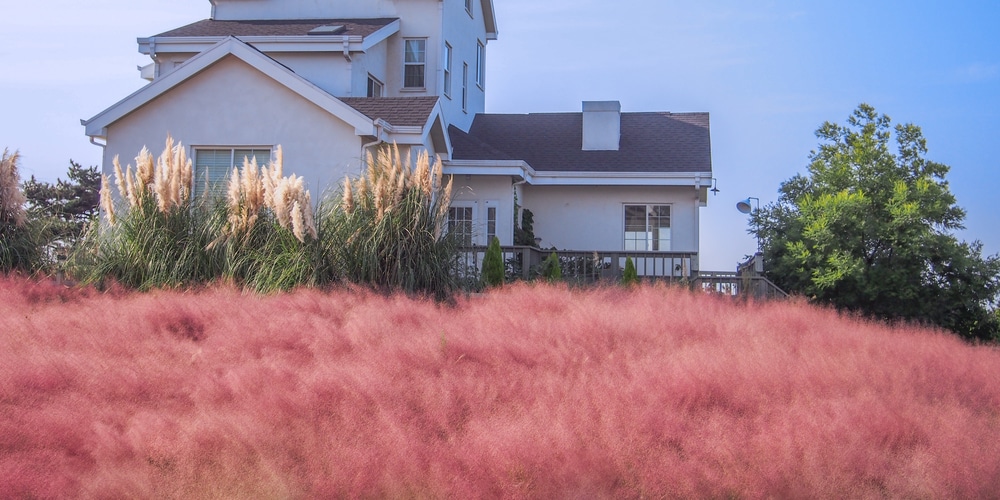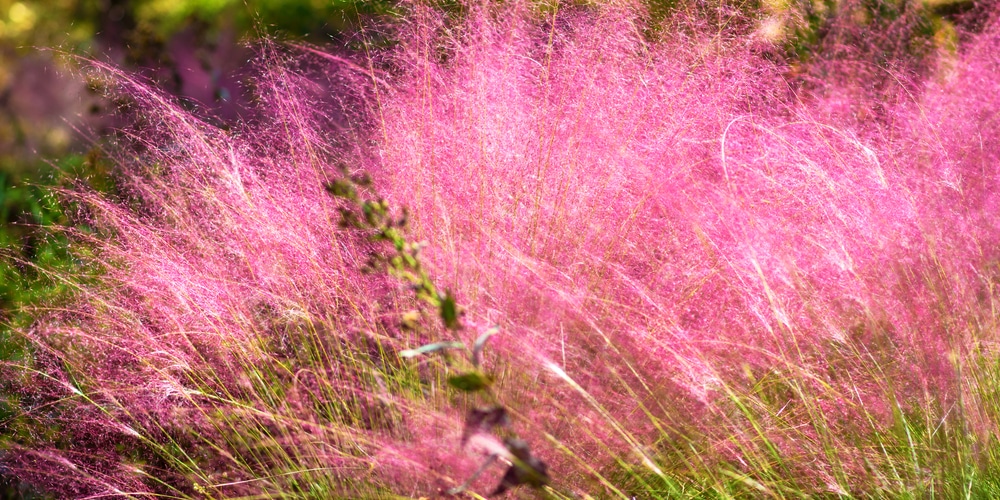If you like the look of pink muhly grass and are considering planting this ornamental grass variety in your yard, you may be wondering what it looks like in winter? This ornamental grass produces pink seed heads that look great in the summer and last well into the fall. In warmer climates, the flowers will stay pink in the winter and will fade as frost or snowfalls.
Pink muhly grass is a popular ornamental grass that grows across much of America and is a common sight in yards in USDA zones 6 to 9. Let’s find out what happens to pink muhly grass in winter.
Pink Muhly Grass in Winter
Pink muhly grass is also known as pink hair or candy top, appropriate names since the seed heads are tinged with pink or reddish-purple colors. The leaves are blue-green in summer but dull green to yellow-brown in winter. They have a tendency to dry out and go dormant after the first hard frost.
Pink Muhly grasses botanical name is Muhlenbergia Capillaris, and it’s part of the Poaceae family. It’s a USA native and grows throughout the south and east of America in the wild. Its mature height is one to three feet with a spread of about two feet. This ornamental grass variety evolved as a warm season grass, so it grows best during the spring and summer months. Its color will begin to fade in the late fall, but flowers can last into the winter, depending on the climate.
If you have been taking proper care of it during its main growing season from mid-April to mid-October, the plant will look lovely in the winter too. Pink muhly grass will often grow all winter if temperatures stay above twenty degrees Fahrenheit or so.
How to take care of pink muhly grass during the cold winter months
It’s a wise idea to give your pink muhly a dose of fertilizer with nitrogen content in the fall to ensure it does well throughout the winter. Although this plant is relatively cold hardy, it is a warm season grass and may suffer if temperatures drop to freezing point. In the harshest environments, it will become dormant, while in warmer areas, it will continue to grow in the winter.
You can also use mulch around your plant, which provides protection against hard frost. This helps retain moisture as well as protect the plants from damage by heavy snow or ice that can pile up.
If you’re growing your pink muhly grass in a container, you can move it to a sheltered location if strong winds are common. Muhly grass is generally a tough plant, and in most cases, you don’t need to worry about it during the winter. It’s also worth considering for your landscape design plans if you are looking for winter color!
If you plan to propagate your pink muhly, you can also collect seeds from the flower heads in the fall or winter when they have started to die back. These can be dried out and then planted in the spring.
It’s unnecessary to water your pink muhly grass in the winter as in most places; there will be adequate rain or snowfall to water your plants. This species of grass also become dormant in winter and, as a result, requires less water.
Once the flowers have finished blooming, you can prune your plant, cutting off any deadheads. This will allow the plant to put its energy into producing new growth in the spring when the weather begins to get warmer. When it wamps up, there are a lot of choices when it comes to plants that you can plant with pink muhly grass.
Conclusion
Muhly Grasses are primarily used as ornamental plants due to their fine texture and striking color changes depending on the seasons. There are many cultivars available that have different foliage colors, textures, tints, or tones during different seasons.
Pink Muhly produces lovely blooms in the summer, which last into the fall and winter. The ornamental grass also has foliage that changes color in the winter and helps add interest to your winter landscape. In warmer climates, the grass will stay pink throughout the winter.

